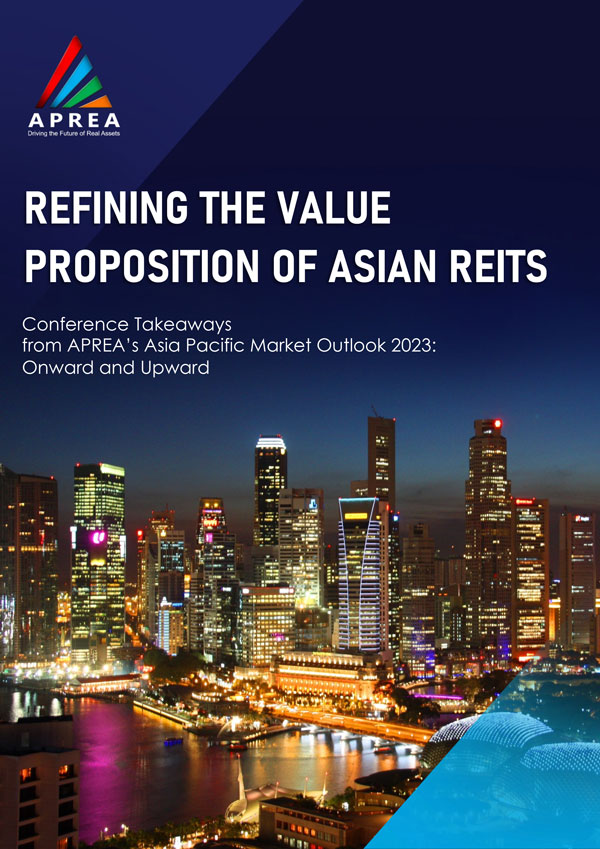CBRE’s 2023 China Investor Intentions Survey was conducted between November 8, 2022, and December 2, 2022. A total of 207 mostly China-based investors participated in the survey, which asked respondents a range of questions regarding their buying appetite and preferred real estate strategies, sectors and markets for 2023.
Pandemic-related uncertainty, geopolitical tension, slower economic growth and weaker leasing fundamentals dampened commercial real estate investment sentiment in China in 2022. Full-year investment volume dropped by 22% y-o-y to RMB 220 billion, while cross-border investment fell by 19% y-o-y to RMB 49 billion. Active sectors included multifamily, science parks and industrial factories, which continued to benefit from the development of a public REIT market.
Respondents’ intentions to “buy more” and “sell more” both dropped in 2023 due to recessionary fears and mounting geopolitical tension, reflecting the mood of caution in the short-term. However, it should be noted that this survey was conducted between November 8, 2022, and December 2, 2022, prior to the government’s unveiling of a 10-point plan signalling a shift away from the zero-covid policy. CBRE expects the relaxation of the zero-covid policy; the release of industrial support policies including the “three arrows”; and the promotion of the platform economy to boost investor sentiment, ensuring actual investment activity eclipses the survey results.
This report was originally published in https://www.cbre.com/insights/reports/2023-china-investor-intentions-survey
Download the Report Read More
The last decade was marked by an aggressive expansion of the region’s real estate markets. APREA’s Asia Pacific Market Outlook 2023: Onward and Upward held a session with REIT stakeholders on their business strategies around Covid, e-commerce, changing monetary policies, geopolitics, and new priorities (ESG) and the next set of challenges and opportunities.
Download the Report Read MoreEnough has been written about the impact of Budget 2023 on REITs and InvITs. Through this piece, Resolut Partners tries to succinctly capture the what, why, and what next of the proposed changes – keeping it germane mainly to global financial investors.
Key Takeaways:
Rising interest rates are causing buyers to be mindful of the associated costs when transacting a property. For an international buyer, these costs can vary substantially across jurisdictions. Expressed as a percentage of property prices, they range from under 10% in Chinese cities to 35% in Singapore.
In an increasingly competitive market, Singapore’s government has maintained their Additional Buyer’s Stamp Duty (ABSD) at 30% for foreign buyers purchasing any residential property.
In comparison to other regions, North American cities cost of ownership comprises a substantial share of the buying, holding and selling cost of a property. These costs are largely comprised of annual property tax and house insurance.
This report was originally published in https://www.savills.com/research_articles/255800/339112-0
Download the Report Read MoreIn the last five years, Asia’s share of the FTSE EPRA/Nareit Developed Index, the most widely followed real estate index globally, has declined from 25.0% in 2017 to 21.0% at the end of 2022. This movement can be largely attributed to the growth of U.S. REITs, shifting the balance of power within the listed universe further to North America, whose share of the index rose from 57.1% in 2017 to 64.0% in 2022.
The growth in the U.S. REIT universe has been driven by the emergence of a wide range of alternative real estate sectors that have arisen from structural shifts in the economy and strong demand from equity investors. The share of these alternatives in the U.S. portion of FTSE EPRA/Nareit Developed Index rose from 34.0% in 2007, to 47.5% in 2017 and 55.0% in 2022.
Growth in the U.S. listed REIT universe has been so prominent, that index constructors such as FTSE introduced capped indices, limiting the size of the U.S. component to avoid global indices being increasingly seen as ‘US & others’ and diminishing their usefulness to investors.
One might ask: Why has Asia been unable to keep pace with the growth in U.S. alternative REITs? In fact, Asia’s alternative REIT universe has grown even faster than in the U.S.. While Asia’s weight in the global REIT index fell – from 27.1% in 2017 to 21.0% in 2022, the weight of Asian alternative REITs increased from 2.3% of the global index to 3.8%, respectively. Looking only at the Asian REIT universe, alternative REITs grew their weight by an impressive 114.7%, from 8.5% in 2017 to 18.2% 2022.
This paper, written by Joachim Kehr, Head of Asia-Pacific and a Senior Partner at CenterSquare Investment Management, investigates the sectors behind the expansion of alternative REITs in the U.S. and Asia over time and explores which sectors offer the biggest growth potential for Asian alternative REITs, proposing additional steps to sustain this growth going forward.
Download the Report Read More